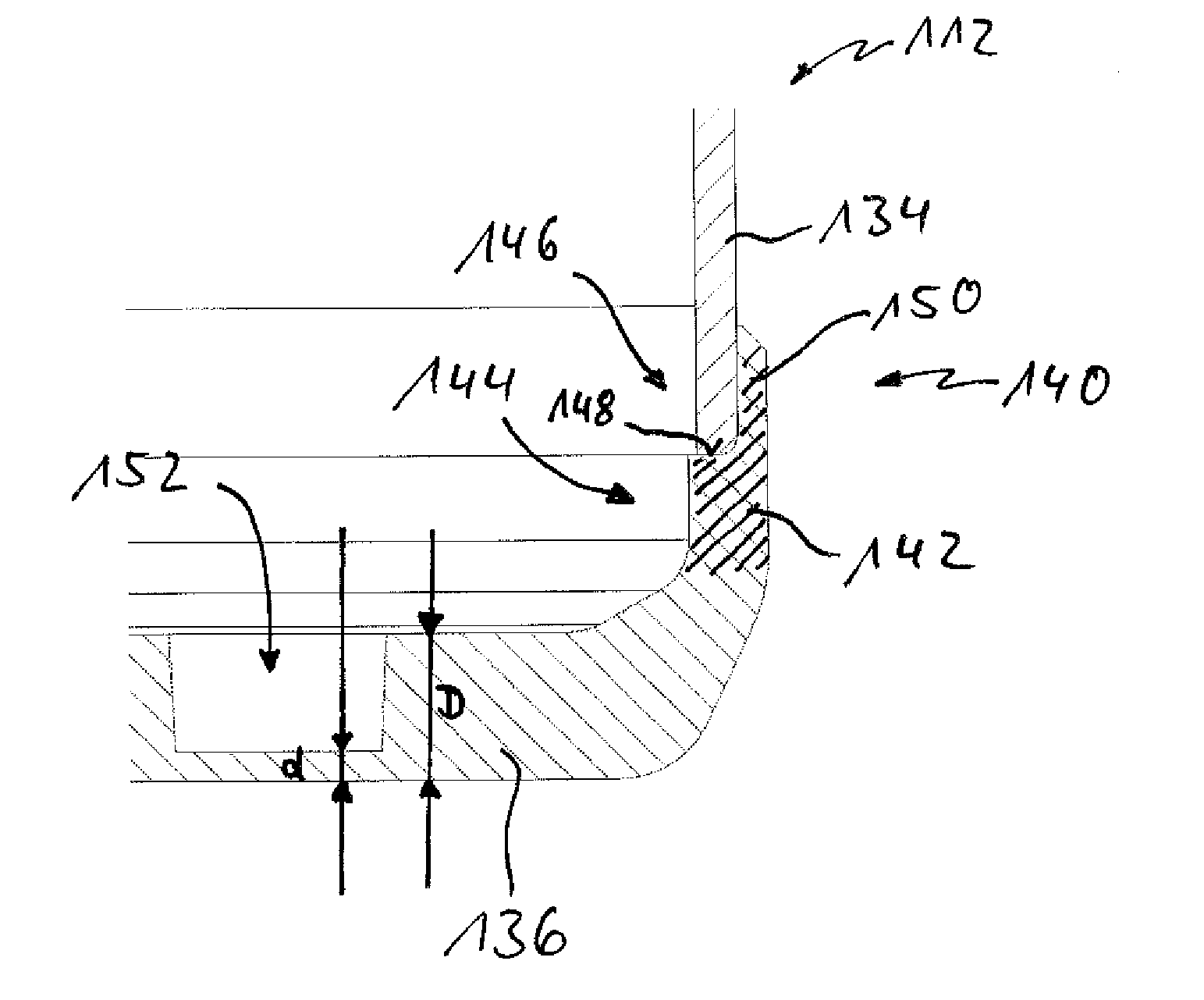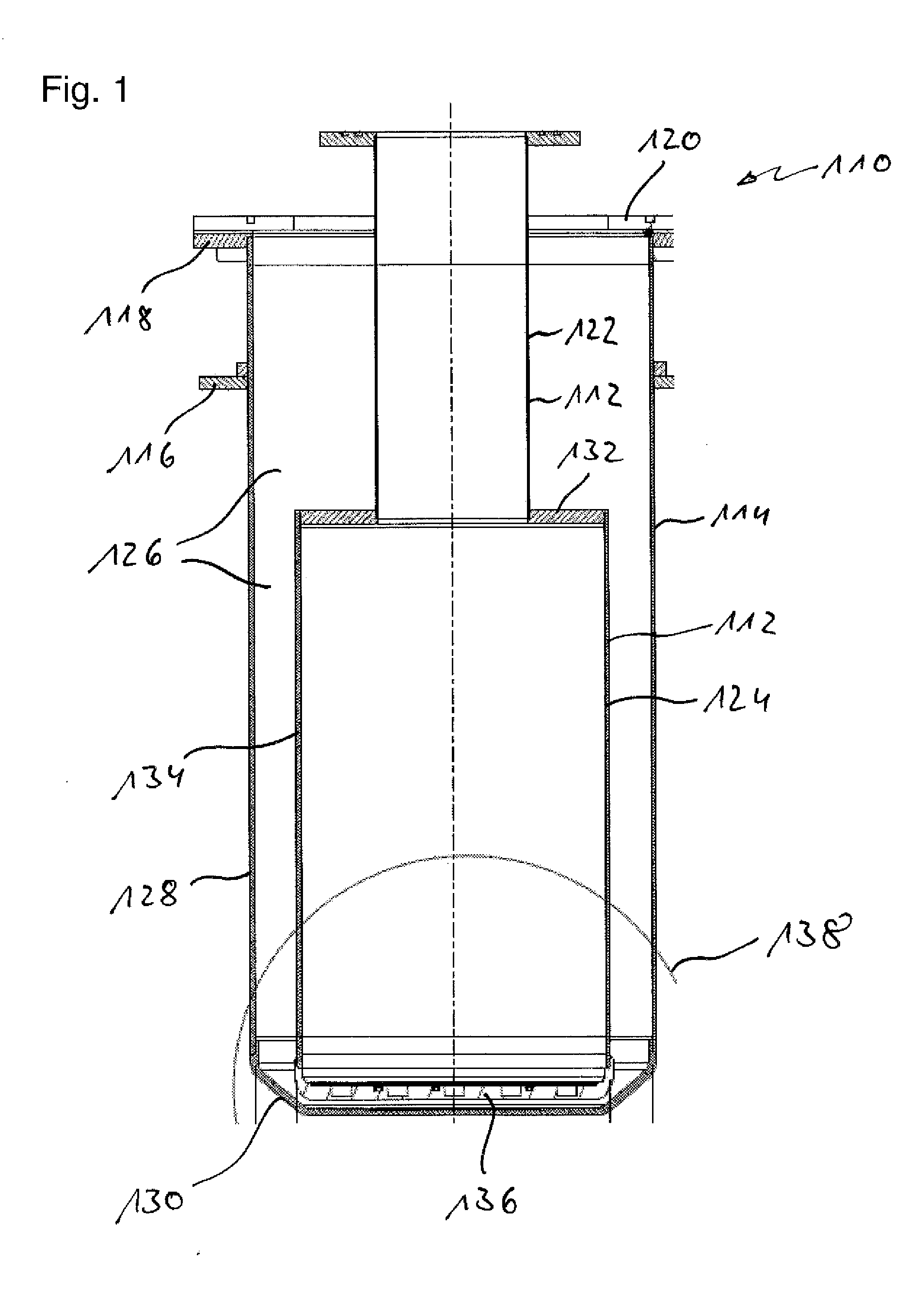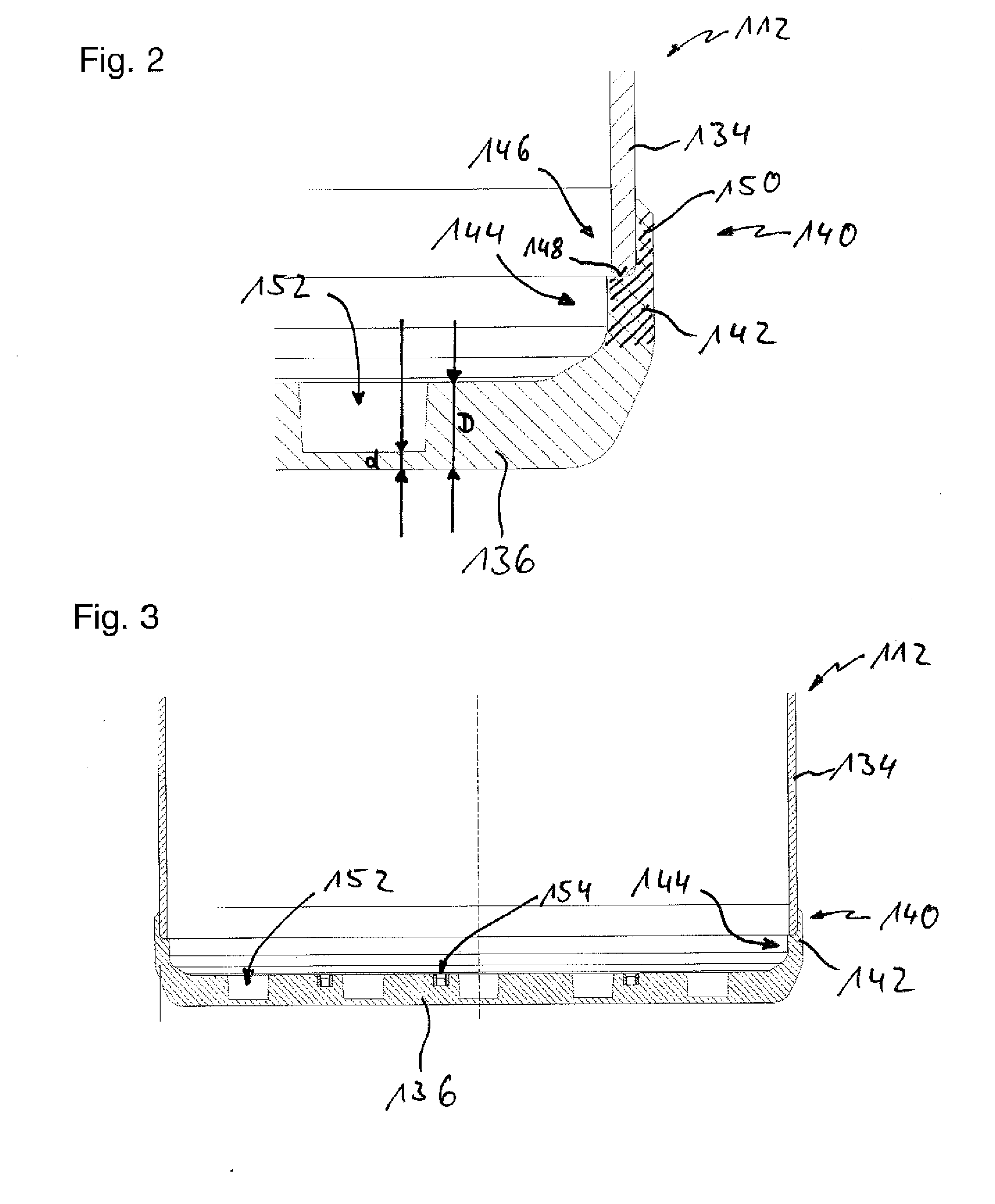Cryostat having a reinforced interior vessel
a technology of cryostats and internal vessels, applied in the field of cryostats, can solve the problems of large metrological challenge, large changes in the magnetic field temporal, and easy appearance of changes,
- Summary
- Abstract
- Description
- Claims
- Application Information
AI Technical Summary
Benefits of technology
Problems solved by technology
Method used
Image
Examples
Embodiment Construction
[0011]This object is achieved by a cryostat and a method for producing a cryostat with the features of the independent claims. Advantageous developments of the invention, which can be implemented on their own or can be combined, are illustrated in the dependent claims. The wording of all claims is hereby incorporated in the description by reference.
[0012]A cryostat for use in a biomagnetic measurement system is proposed, which cryostat has at least one inner vessel and at least one outer vessel, and at least one cavity arranged between the inner vessel and the outer vessel. Provision can analogously be made for a plurality of such inner and / or outer vessels and / or a plurality of cavities. Negative pressure should be able to be applied to the cavity, that is to say it should be possible to seal said cavity in order to make it possible to evacuate it. For this purpose, the inner and outer vessel for example can have appropriate seals (for example separate sealing rings and / or sealing ...
PUM
| Property | Measurement | Unit |
|---|---|---|
| biomagnetic | aaaaa | aaaaa |
| pressure | aaaaa | aaaaa |
| circumference | aaaaa | aaaaa |
Abstract
Description
Claims
Application Information
 Login to View More
Login to View More - R&D
- Intellectual Property
- Life Sciences
- Materials
- Tech Scout
- Unparalleled Data Quality
- Higher Quality Content
- 60% Fewer Hallucinations
Browse by: Latest US Patents, China's latest patents, Technical Efficacy Thesaurus, Application Domain, Technology Topic, Popular Technical Reports.
© 2025 PatSnap. All rights reserved.Legal|Privacy policy|Modern Slavery Act Transparency Statement|Sitemap|About US| Contact US: help@patsnap.com



